The use of smartphones has become a daily part of our lives. Communication has been made easy, and people use several applications to communicate with one another. Smartphones, with a lot of sophistication, are replacing personal computers, which dictates the fact that they could soon be the main digital device we need.
Since 2013, the number of smartphone shipments has been rising every single year, and it is expected to cross 1.5 billion shipments per year in 2022. That, of course, is staggering given the fact that 40% of the world’s population will own a smartphone by that year. Yes, almost 3 billion people worldwide will use a smartphone!
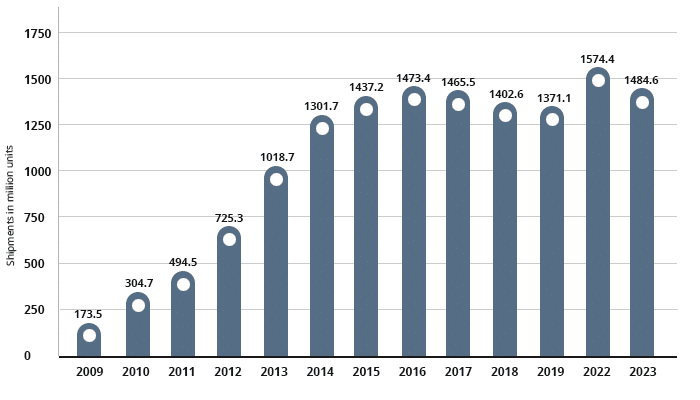
(Source: Statista)
Why is the above smartphone-related stat interesting? Well, increasing smartphone usage has changed the way people do commerce. Transactions have taken a whole new shape. They have transformed from traditional to digital, and most importantly, mobile-commerce!
What’s buzzing with mobile commerce?
While offline retail stores remain important, what’s even more important these days is to understand the fact that,
75% of shoppers in the US prefer to use mobile devices along with physical shopping in retail stores.
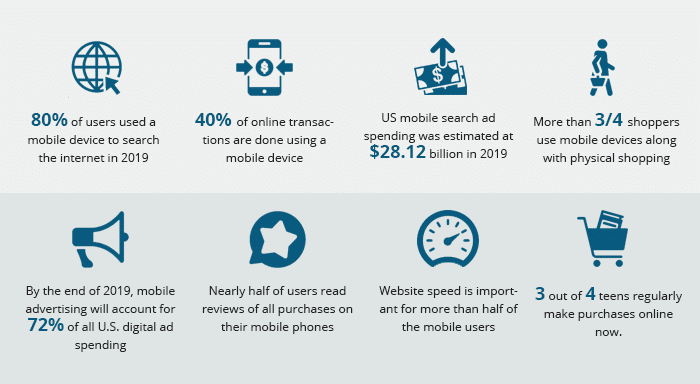
Mobile commerce or mCommerce has been revolutionising the business world since the last decade. As more and more people use smartphones, sending and receiving money has also been made possible through digital transactions. With the rise of eCommerce in the 2000s and 2010s, mobile e-commerce has transformed numerous retailers and consumers. They now must interact and trade using wireless technology on mobile devices and related functionalities. Needless to say, transactions should be safe and secure for both of them.
Consumers are effectively using mobile devices to search for products and services that they’re looking for all year round, and even more so in the holiday season. That’s when most of the eCommerce sales peak! eCommerce retailers work on numerous product recommendation strategies to offer daily deals to attract consumers and shoppers and make the most of the holiday season.
It’s also evident that during the holiday season, shoppers are more likely to browse on their mobiles, as it’s more convenient to shop on the go. This is also the time when your customers are willing to shop at new brands and have a closer look at customer reviews to find that perfect gift for their loved ones.
All of which means you have to run a lot of mobile commerce promotions over the holiday season to target new customers when their intent to shop is the highest. If you can offer them a seamless mobile shopping experience, these customers will end up converting at a higher rate and spending more.
Before we get to the nitty-gritty of optimising your mobile commerce, though, let’s cover the fundamentals.
What is Mobile Ecommerce?
Mobile Commerce definition
Mobile commerce is that branch of commerce that includes monetary transactions completed using a digital device – smartphones or tablets. That is, both buying and selling of goods and services done through wireless handheld devices.
The ubiquity of smartphones, in addition to the growing importance of search engines, social integration, and changing work and lifestyle patterns, has led to the growth of mobile commerce. Mobile devices offer speed and convenience over laptops and desktops. This is the main reason why mobile shopping is the preferred way to browse and buy.
As the name suggests – it’s online shopping through mobile. M-commerce is a valuable tool to engage customers and offer seamless shopping experiences. Any amount of investment to set up your mobile eCommerce, if done wisely, will be justified by loyal customers.
Mobile commerce is considered as an advancement to eCommerce. The main reasons being (a.) the tremendous growth potential and (b.) better, more customer-centric experiences. Also, don’t forget the impact of m-commerce’s on the convenience of shopping, interactivity, ease, and improved customer retention.
So, consumers are ready for mobile commerce. It would be interesting to find out how eCommerce retailers have developed more modern applications and upped their offering to catch up with increasing consumer demand through digital devices.
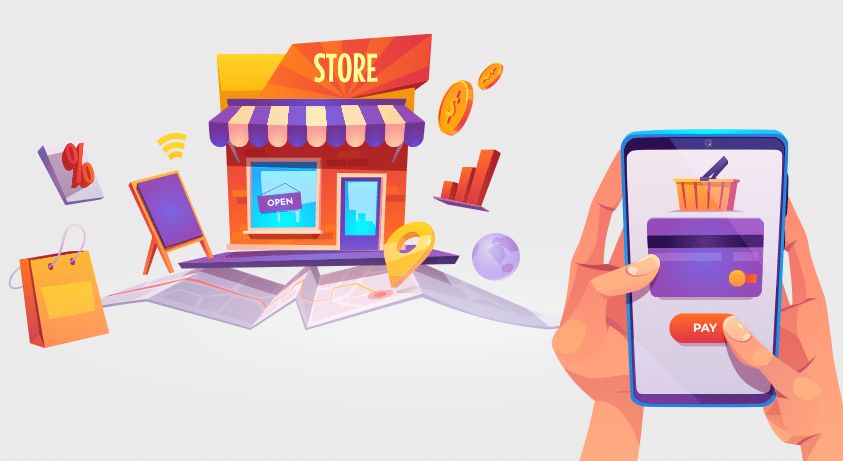
How Mobile Commerce Works
As all of us know, mobile commerce involves the use of portable mobile or cellular devices and related solutions. That includes things such as mobile phones, cloud phone systems, smartphones, and tablets. But the main two features around which mobile e-commerce functions are 1) mobility and 2) ubiquity.
The portability of m-commerce results in closer proximity between businesses, business models, and their consumers. This means it is now possible for businesses to reach their target audience faster.
None of the parties involved is restricted by physical barriers or geographical locations when doing commerce. Be that purchasing a product, completing a bank transaction, or one of the many other processes now possible on mobile devices. The technology and devices that power mobile-commerce are also available and readily accessible.
Proximity closes the gap between brands and shoppers, and as cross-device engagement increases, there’s a higher probability of eCommerce sales conversions. Right from the time a consumer sees a particular product to when they make a purchase, proximity plays a significant role.

These days, contactless payments are also on the rise; this is feasible due to the use of Near Field Communication (NFC). As such tech and consumer demands continue to develop, such shifts will only accelerate.
Benefits of Mobile Ecommerce
1. It is highly scalable.
As consumers worldwide are going mobile-first, m-commerce opens the door for a global footprint. With billions of smartphone and tablet users across the globe, brands can enter untapped markets to expand their presence. All that’s needed from any new prospect is a smartphone and the internet. Shoppers and consumers can get access to similar products and deals that brands offer in highly established markets.
Brands typically build mobile applications instead of just providing consumers with a mobile site. The use of mobile applications enables shoppers to take actions much faster, resulting in better brand building as well as scalability. So, the possibilities are almost limitless.
2. You get better access to user data.
With mobile commerce, brands have better access to consumer data and can understand buyer intent like never before. When brands can map buyer intent to their product-related attributes, they can offer better personalisation.
Tailoring brand communication messages and working on strong messaging for every segment can augment personalisation based on a user’s interest, behaviour, location, language, etc.
3. Provides better engagement for users.
Notifications have come a long way in providing constant engagement with users. Web push notifications as well as in-app notifications, can boost user engagement.
One word of caution is that brands should make sure that the push notifications they send are non-intrusive and are brand messages that users will enjoy reading.
Higher engagement results in better brand recall whenever a brand’s users visit Google Play Store, iTunes, or Windows store. Thus making them more likely to buy or download a brand’s apps.
Mobile applications have interfaces that allow users to partake in social sharing. They can simply share an image with their friends and show what they’ve bought via easy sharing, and one-click buy will boost your communications with the customers still further.
Mobile applications can enhance branding, which in turn increases your store’s sales.
4. Has the ability to retarget your customers.
Not all the consumers who come to a brand’s website will complete transactions.
Facebook and Google are the most powerful retargeting platforms where brands can leverage their network to reconnect with those customers again. Why is this important?
Retargeting helps address 98% of visitors who leave a website without making a purchase.
This makes retargeting or remarketing one of the most important channels in a brand’s digital mobile marketing playbook. One of the best ways to create retargeting ads is to include user-generated content within it. The importance of customer reviews is vital and will help your brand build trust and credibility.
What’s even more interesting for brands to consider is this –
The average CTR for retargeting ads is surprisingly 10X that of display ads.
As more and more users see a brand’s visuals (that they’ve already seen before), it enhances their branding and credibility.
5. Aids better inventory management.
One of the basic principles in retail is to maintain appropriate inventory. It means you have to make sure that you have enough stock to meet the demand that comes from your shoppers. All the while enduring you don’t overstock and end up misusing your working capital.
Managing the supply chain for your retail business model can be challenging. With Commerce, it’s easier to keep a tab on inventory management, thanks to:
- A single dashboard to check all your inventory levels.
- Notifications and updates about stock shortages.
- Ability to track and retrieve historical inventory data along with pricing.
- Grouping items into various categories.
- Ability to import and export inventory-related data.
6. You get easy online and offline access.
Businesses are moving towards a digital-first approach. Retailers nowadays look for several touchpoints – both offline and online – to attract customers.
It’s all about providing an omnichannel experience to the users when it comes to contextual commerce. The following factors play a significant role in providing omnichannel experiences:
- Understanding consumer’s daily experiences and their needs.
- Providing them key insights into product availability, pricing, and discounts, irrespective of the source.
- Social commerce – social channels are on an upswing when it comes to promotions, branding, and even online shopping.
7. More payment choices for online shoppers.
Mobile wallets made a significant impact last decade in increasing mobile adoption when it comes to payments. They themselves are now becoming a thing of the past, as more innovative mobile payment options from technology giants emerged in the last few years.
Apple has been at the forefront of mobile payments innovation, and Amazon is not far behind. These are today’s most popular mobile payment options:
- Apple Pay
- PayPal
- Amazon Pay
- Samsung Pay
- Visa Checkout
- Google Pay
Types of Mobile Ecommerce
M-commerce covers a wide variety of transactions and can be broadly categorised into mobile shopping, mobile banking, and mobile payments. It can also denote any user searching for information, cab-hailing services, food delivery, etc.
We’ll give you a summary of types of mobile commerce before deep diving into it. Mobile shopping – as the name suggests – allows shoppers to purchase a product from a mobile device, often using an application. This makes app commerce a subcategory of mobile shopping, which is a transaction that takes place over a native app.
Mobile banking includes any handheld technology that enables customers to conduct financial transactions through a safe and dedicated app. Mobile payments enable shoppers to buy products in-person with the help of a mobile device. Let’s dig deeper!
Mobile Shopping
Mobile users are hungry to consume information available on the web. And mobile shopping is a prime example. As already mentioned, mobile shopping allows a customer to purchase a product from a mobile device, using a platform such as Amazon, or over a web app.
According to Google,
Six in 10 internet users initiate shopping on one device but continue or finish on a different one. Also, 82% of smartphone users say they consult via their phones on purchases they’re about to make in a store. They collect ideas, browser information, and make decisions, all from their smartphone anytime and anywhere.
Shoppers look for a variety of information online and even do so when shopping locally at a brick and mortar store. If they walk into a retail store, a modern consumer will gather ideas, analyse them, and do more research about the products they want to buy on their phone.
When we talk about the mobile shopping experience, every eCommerce app owner should research and identify the right target audience. When we talk about the audience, there are mainly two types of users; Informative and commercial.
Commercial users intend to buy products, while informational audiences focus on resource gathering. The bottom line is that you should know your audience and the features they are looking for as well as possible. Make sure your mobile shopping experience has the capability of resolving issues or give something new to shoppers.
Mobile Payments
Brands across the globe are building native apps wherein transactions can take place rather than relying on a mobile-optimized website.
According to eMarketer,
“Mobile transactions will exceed a whopping $300 billion in 2020.”
It’s not surprising that mobile payments have become one of the most popular eCommerce store strategies to reach out to more shoppers.
As we already mentioned, these transactions are done through a safe and dedicated app often provided by a banking institution. Mobile payments enable users to purchase products with the use of mobile phones easily. Digital wallets, such as Apple Pay and Google Pay, allow a customer to buy a product without needing to swipe a card or pay with physical cash.
Here are a few types of mobile payment solutions used frequently:
- Mobile Wallets: Mobile wallets are a popular method of mobile payment that has now been around for a few years. The “tap-to-pay” feature using NFC (Near Field Communication) lets you pay from an online wallet preloaded with cash. Google Pay, Samsung Pay and Apple Passbook are a few famous mobile wallets out there.
- Direct Mobile Billing: This sort of billing is effective when carrier billing and postpaid plans are in the majority. In this method, once a customer purchases a product, the amount of the purchase is directly added to the mobile bill of the customer.
- Mobile Phone as a Credit Card Terminal: Mobile phones are equipped to read credit cards to make and receive payments. This method of payment is very beneficial for those operating a small business model, as it is a fast and secure method. They don’t even have to pay exorbitant EFTPOS machine fees.
- Mobile Web-based Payment: Here, the consumer uses the internet, web pages, or a dedicated application installed on their phone. Wireless Application Protocol (WAP) is the underlying technology used here. This method is incorporated by many mobile network operators, with one of the most prominent services being provided by PayPal under the name of PayPal express checkout.
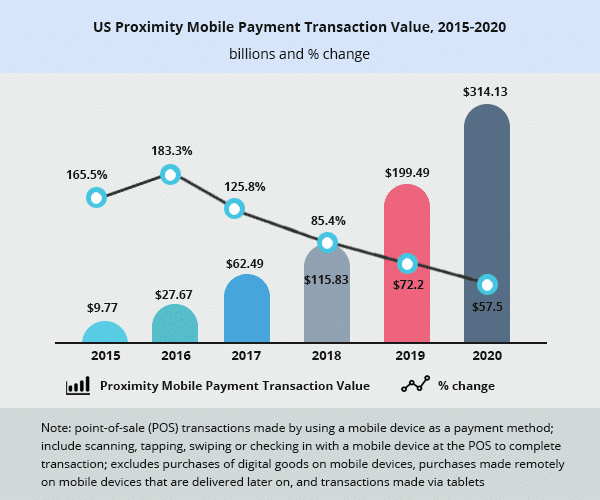
Mobile Banking
Mobile banking or m-banking includes any handheld technology that enables customers to conduct transactions rather than a personal computer.
Nowadays, mobile banking services are offered on applications (through Android or Apple iOS) instead of a mobile browser. Mobile banking reduces expenses by eliminating the role of relatively expensive global phone calls to a bank’s customer service call centre. More than half of all customer service calls come through mobile phones. Younger shoppers, who are most likely to carry mobile devices, prefer mobile banking compared to other forms of banking.
Mobile phones have already started to replace ATMs and credit cards due to their convenience and trustworthiness.
Benefits of Mobile Banking
- It allows customers to review transactions, pay bills, and check account balances without ever having to walk into a bank or use traditional phone banking.
- Transaction notifications are sent via SMS messages. This ensures the safety and removes security issues.
- Mobile cheque deposits are also on the rise. All that’s needed is to upload the picture of the cheque. It’s that easy.
Common Mobile Ecommerce Challenges
1. Technology is not available to everyone.
Though technology adoption is increasing across the globe, countries in the developing world do face a lot of challenges. Network quality may be bleak, and service providers may not be able to provide good network connectivity. This can hamper the entire data transfer mechanism, weakening the experience shoppers would expect from a mobile application/platform.
2. Users face regulatory hurdles.
Certain countries enforce strict data protection policies. Businesses may find it difficult to thrive in those tough business conditions.
Some countries may be difficult to ship to, as businesses may have to comply with a large number of tax laws and other regulations. So, business expansion can face a bottleneck with circumstances such as these.
3. It is a highly competitive marketplace.
Competition is increasing by the day in mobile commerce. Many large businesses may have to compete with much smaller competitors and vice versa.
The challenge here could be to provide more discounts at the right time, as consumers are always looking for value and savings. This can also impact profitability for several businesses.
4. Personalisation can get challenging at a scale.
Having a static website may not cut these days. Your online and mobile presence needs to be dynamic and responsive.
Real-time personalisation can pose a challenge to businesses, especially at a scale. Handling a large volume of data can be a time-consuming process.
With artificial intelligence and machine learning booming, it’s time to start believing that AI/ML can understand your customers better than you do. Embracing such technologies can help your team to focus more on customers.
5. Shoppers will be able to find a lower price for the same product elsewhere.
Pricing is a critical buyer behaviour metric. Higher pricing for the same product can result in lost sales. So, it’s important to follow a dynamic pricing model in eCommerce. There are many interesting ways in which pricing can be deployed:
- Cost-based pricing
- Competitor-based pricing
- Value-based pricing
So, depending on the industry vertical and competitor landscape, you may want to consider one of the above pricing strategies to stay competitive in the world of mCommerce.
Designing a Mobile Ecommerce Experience
App vs mobile landing page
Before we deep dive into building applications and having mobile landing pages, let’s understand the importance of mobile user engagement and experience.
eCommerce businesses prefer to engage more deeply with their customers in every possible way. One of the best ways to achieve this is to reach your target audience where they prefer to spend most of their time.
Building a mobile application for a business is not a technological innovation; it paves the way to gain more visibility and can help you get more market share when you do things the right way.
Building a Mobile Application
Why build a mobile application? This is one of the most interesting questions in today’s world of commerce. Shoppers are on the lookout for an enhanced user experience. A mobile application allows you to provide precisely that, by upping user engagement with your brand.
You can choose one of these platforms when you consider building a mobile application:
- iOS App
- Android App
- Windows App
Here are some interesting stats about conversion rates in eCommerce by the mobile operating system.
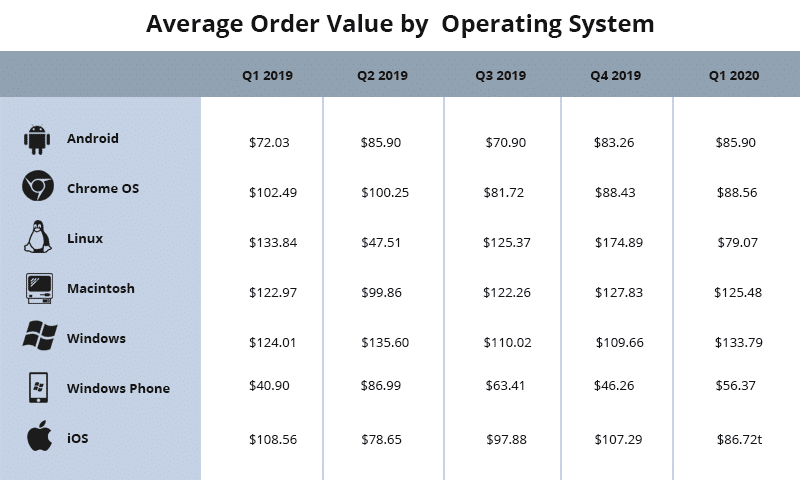
(Source: SmartInsights)
As more and more users download and use your application, it also increases brand loyalty and helps in repeat purchases. This can be made possible by developing a mobile app in one of the above mobile platforms, especially an iOS app or an Android app, as they have higher average order value when compared to Windows Phone.
You may want to consider the following when you build a mobile app,
1. Create a pleasant UI/UX design.
User perception and a pleasant user experience (UX) is important when it comes to promoting your business through mobile commerce. Your application should be easy to use. Users should be able to navigate with fewer clicks and discover or buy whatever they want to.
And don’t forget to optimize your page load time. The lower the page load time, the better your app’s performance. Once the performance of your app is seamless and consistent across the buyer journey, you’ll have more loyal customers and frequent buyers.
2. Develop a native or hybrid app.
Native apps are those applications developed with a particular operating system in mind. iOS and Android applications are popular these days. One of the key benefits of developing a native app is that a business or a brand can take advantage of its features.
Example:
Target.com has a native app for both Android as well as for iOS.

Hybrid apps are predominantly web-based applications that are designed to work on popular web applications such as HTML, CSS, and Javascript. They will then be configured to work on Google Play or the App Store. These are relatively easy to develop in the beginning, as compared to building a native application which is time-consuming.
3. Keep tabs on your competition.
Consumers always expect more. They do a lot of research and use many mobile applications. So, be wherever your audience is and in a robust way. You have to position your brand in a much better way than your competitors.
For strong brand positioning, it’s essential to analyse and match what your top competitors do. This is the bare minimum to stand out from the crowd. Go that extra mile to make great things happen.
There are thousands of mobile applications for each particular eCommerce vertical and industry. So, having higher benchmarks will always help to win your customer’s attention.
4. Don’t forget to track mobile analytics.
Be data-driven!
Numbers speak for themselves. Use Google Analytics or any other analytical tool to analyse user data. It can help increase feature adoption and tackle the following:
- Creating events – when you create and track events in an analytical tool, you can get to know user navigation and make necessary fixes in workflows wherever required.
- Pinpointing particular functionalities to grow – when you see consumers’ repeat usage of a particular web page or workflow, it can provide some hints about popularising some of your app’s functionalities.
- Retaining more customers – if you understand why your customers are leaving and at which touchpoints, you will be able to retain more customers than ever before.
- Improving the overall experience of the users – providing a seamless experience should be your goal. Once you connect the dots with the available data points, you will be able to offer unique shopping experiences.
5. Identify your target audience.
It’s important to build user-centric experiences.
Spend a lot of time researching your target audience and what they expect from you as a brand. Some of the key metrics would be:
- Geographic location
- The technologies they use
- Gender
- Language
- User interest (specific to industry)
When you have enough insights into these metrics, you will be able to build a mobile shopping app that will delight your customers.
Building a Mobile Landing Page
When you don’t have the time to build a mobile application from scratch, it’s wise to build a mobile-optimised website. Conversions will see an uptick when you get your mobile optimisation right.
As mobile optimisation isn’t just a trend anymore, it’s important to always have the following in mind:
- Mobile-friendly optimisation
- Responsive web design
- Mobile-optimised website
Designing for thumbs has been the trend against building a layout for a bigger screen. You may want to give more importance to the reach of the thumb when you build mobile layout and CTAs.

Reddit has done a fabulous job on their mobile landing page as it promotes its mobile apps. It catches the users’ attention with clear call-to-actions.

Importance of product detail pages while building mobile landing pages.
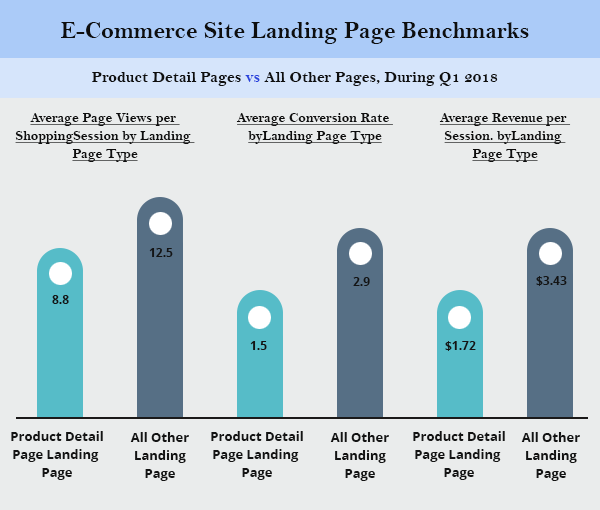
Product detail pages (PDPs) play an important role in increasing traffic, conversions, and revenue for a mobile site. So when you build a product detail page, ensure that you check the following:
- Precise layout – product-related information should be clear to read and grasp.
- Overall page design – this is crucial when it comes to the look and feel of your mobile landing page.
- Top-notch and clear graphics – use high-resolution images that quickly grab the shoppers’ attention. If possible, use informative videos to educate your audience about the product.
- Actionable CTAs – it’s important to have actionable clicks that you want your shoppers to make. CTAs should have a good background colour, and the font size and width should be easily readable.
- Avoid a difficult or long checkout process – you will be able to decrease your cart abandonment rate when the checkout process becomes easier for shoppers. A compulsory account creation step could be avoided for the sake of higher conversions.
- In-depth product details – shoppers look for product-related information. This includes product title, description, category, reliability, weight, size, colour, and so on. It plays a crucial role in the buyer’s behaviour.
- More payment methods – as an eCommerce store owner, you should be able to support multiple payment methods. When shoppers have more payment choices, they tend to buy more.
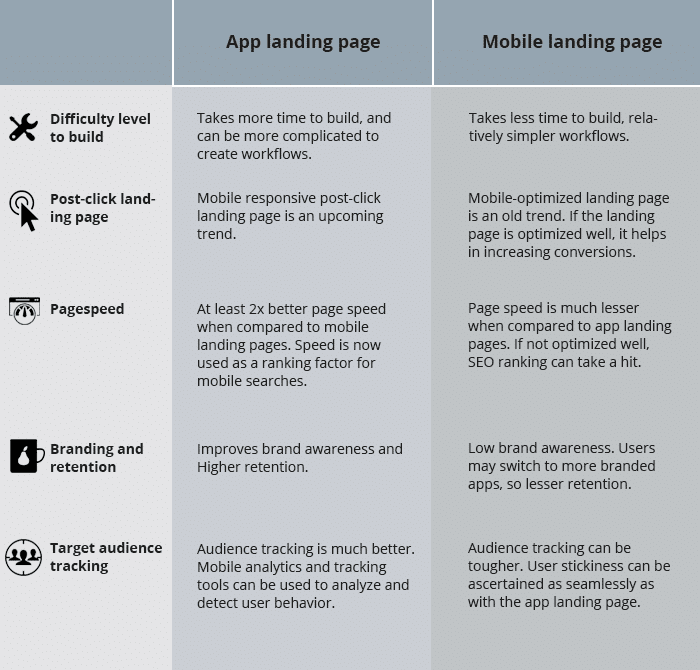
Mobile Payment Options
- In-App Payments
In-App payment allows customers to pay for your online purchases by just adding credit and debit cards into a mobile payment or online shopping app. In a way, it turns the app into a digital wallet, offering you everything that you require for shopping all in one place.
The benefits of In-App payment include being able to complete your purchase in a convenient, secure, and faster way.
- Mobile Wallets
Online companies such as PayPal, Amazon Payments, and Google Pay offer mobile wallet options. The process is straightforward and usually involves less than six steps. Such as; a) registration, b) entering the phone number, c) receiving the PIN via SMS, d) entering the PIN, e) entering credit card information or other payment types to validate the payment.
The benefits of mobile wallets include lower costs as they remove the need for intermediaries, more convenient transaction processing, greater potential revenue, and quicker and easier purchases.
- Mobile Transfers
Mobile transfers allow customers to forget the hassle of cash and cards and complete the purchase process quicker. This method is usually used for peer-to-peer transfers and payments to other people, but that does not prevent people from paying for purchases and online shopping this way.
The benefits of mobile transfers include being able to avoid the high interest and exchange rates of banks, being protected by local financial regulations, and ease of access.
How to Optimise for Mobile Ecommerce
1. Create a simple yet powerful website design.
When you run a business, especially in eCommerce, you want to turn your store visitors into buyers. It’s not as easy as it sounds, though.
Do you know this interesting stat about mobile searches?
70% of all mobile searches result in an action within an hour.
If you don’t have a completely mobile-optimised website along with seamless navigation, your shoppers can always bounce from your online store and head towards your competition.
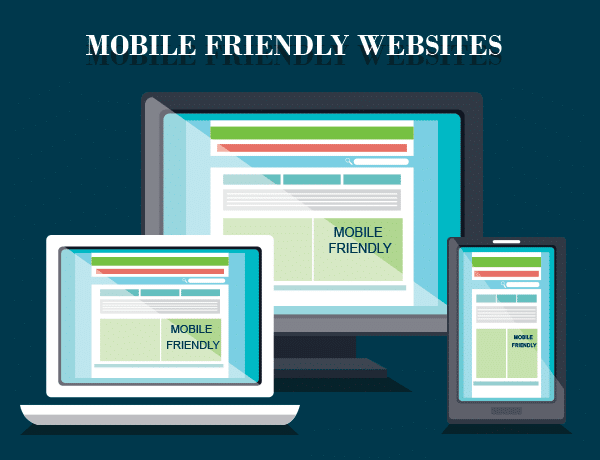
2. Lower page load time is vital.
Most online shoppers don’t have a lot of patience to wait for a page to load completely. Two seconds is the ideal page load time. So, the lower the page load time, the better for your lead generation.
You may want to try using Google’s page speed insights tool to bring down and optimise your page load time.
3. Build a faster checkout process.
An abandoned cart is a serious challenge to many eCommerce businesses. One of the major reasons for abandonment is not having a seamless checkout process. Forced account creation, higher shipping costs, and irregular website navigation can lead to higher abandoned cart rates.
Here are some useful tricks and tips to overcome your abandoned cart rates.
4. Do away with heavy content.
Content-heavy websites can bring down the ease of navigation and increase page load time – especially on mobile devices. This will see you take a hit in mobile eCommerce conversions.
The following are some of the important factors to ensure you don’t go too content-heavy:
- Content should be easy to read – good UI/UX.
- Declutter the content-heavy sections in the website.
- Avoid too many white spaces; instead, replace them with interesting visuals and videos.
5. Optimise images, graphics, and videos.
Having a lot of images and videos on your eCommerce store can help increase engagement. On the flip side, page load time will increase.
One of the best ways to overcome this challenge is to ensure that you use limited high-resolution images. And, if possible, compress the file size of graphics without overly compromising on the image/graphic quality.
Try using Google’s Accelerated Mobile Pages and take their recommendations to optimise your mobile experience.
Mobile Ecommerce Trends
Mobile Shopping
- In the year 2019, 57% of US consumers used a mobile commerce app to learn more about a product.
- To begin with, when compared to mobile websites, 85% of consumers prefer mobile apps. So by building a mobile commerce app for your Shopify store, you’re already giving the customer what they want.
- Compared to $92 from a mobile website, the average order value from a mobile app is $102.
Mobile Commerce Trends Volume
- By the end of 2020, it’s expected that $170.3 billion in mobile commerce sales will come from smartphones, compared to $34.7 billion from tablets.
- The shopping cart abandonment rate while shopping through mobiles is 97%.
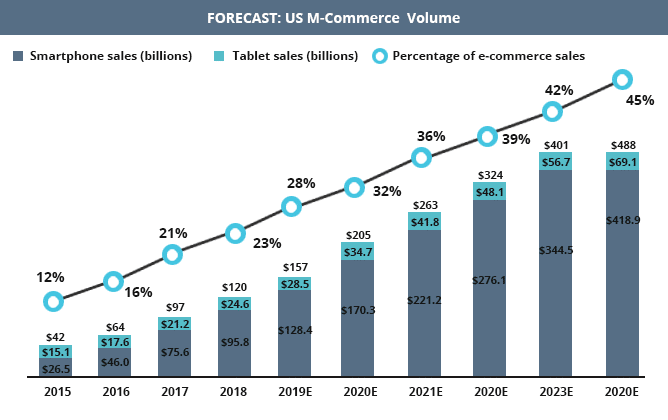
Social Commerce and Voice Search Trends
- A recent case study suggests that brands using Instagram shopping have benefited from a 1,416% traffic boost and a 20% increase in revenue.
- In 2020, voice search will penetrate the eCommerce market with strong impacts. It is expected that voice shopping will hit $40 billion by 2022. That’s up from a modest $2 billion in 2018, which is a 1,900% increase in just four years.
Let’s take a closer look at how consumers are using voice search to shop online.
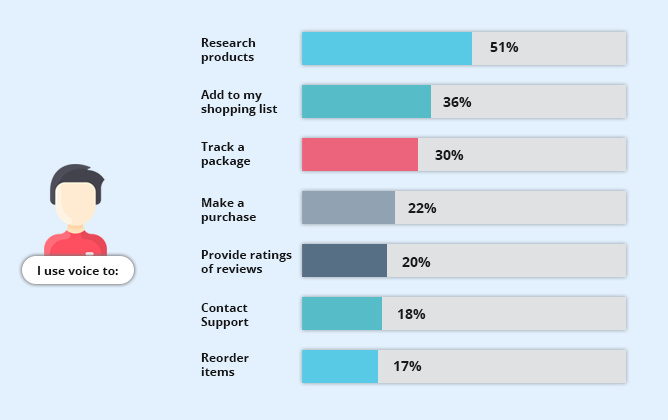
Chatbots
- 54% of people say they would always choose a chatbot over a human rep if it saves them time.
Mobile Payments
- According to Statista, the mobile payment volume is growing at a rate of 62% annually.
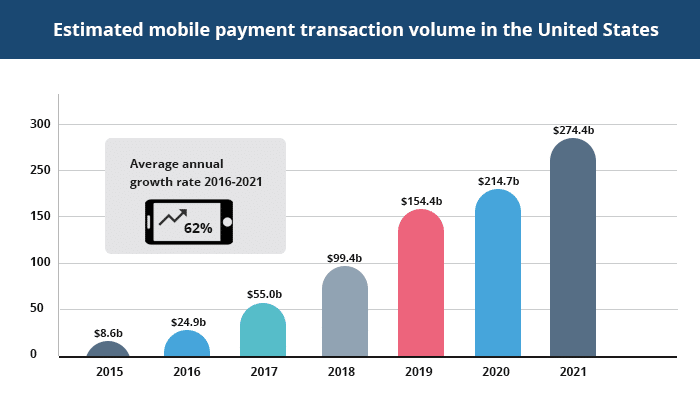
Conclusion
M-commerce plays a critical role in our day-to-day lives. With ever-increasing mobile adoption, this will take new dimensions in the eCommerce industry in this decade. As an eCommerce business, you need to keep a close watch on mobile commerce trends to know more and plan accordingly. More and more shoppers are selecting mobiles as a medium to shop, rather than laptops or desktops or tablets.
M-commerce holds great promise for the future, along with virtual reality and augmented reality. Business Insider even stated that 45% of e-commerce revenue would be coming from m-commerce, by the end of 2020. As the e-commerce industry is expanding, mobile commerce is not far behind. Innovations in technology will continue to drive the growth of m-commerce steadily and effectively. With the implementation of AR, VR, and wearables, soon m-commerce will reach even greater heights.
Originally published Dec 15, 2020, updated Jan 16, 2023



